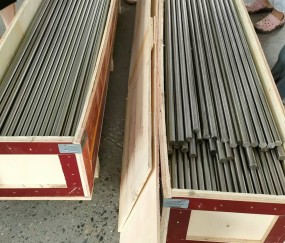Common Alloy Materials Used in Medical Implants
Release time:2025-05-24 Strike:16 Inquire Now
Here is a professionally written article suitable for your website, titled:
🌐 Common Alloy Materials Used in Medical Implants
Medical implants are a cornerstone of modern healthcare, restoring mobility, function, and quality of life for millions of patients worldwide. To ensure long-term performance and biocompatibility, these implants rely on advanced metallic materials engineered to withstand the demanding conditions of the human body. Among these, alloy materials play a pivotal role due to their strength, corrosion resistance, and compatibility with living tissues.
Below, we explore the most commonly used alloy materials in medical implants:
🦴 1. Titanium Alloys (Ti-6Al-4V / Grade 5 / Grade 23)
Composition: Titanium, 6% Aluminum, 4% Vanadium
Standards: ASTM F136 (ELI - Extra Low Interstitial)
Applications: Bone plates, screws, hip/knee stems, dental implants
✅ Advantages:
Outstanding biocompatibility
Excellent strength-to-weight ratio
Non-magnetic and corrosion resistant
Encourages osseointegration (bone bonding)
🔩 2. Cobalt-Chromium Alloys (CoCrMo - ASTM F75)
Composition: Cobalt, Chromium, Molybdenum
Standards: ASTM F75, ISO 5832-4
Applications: Hip and knee prostheses, dental bridges, joint components
✅ Advantages:
Superior wear resistance
High fatigue strength for load-bearing implants
Excellent corrosion resistance in body fluids
Long-term durability
💡 3. Stainless Steel (316L / ASTM F138 / F139)
Composition: Iron, Chromium, Nickel, Molybdenum
Applications: Temporary implants, trauma fixation (plates, pins, screws)
✅ Advantages:
Cost-effective and easy to fabricate
Good corrosion resistance in short-term use
Suitable for trauma applications and surgical tools
⚠️ Note: Not ideal for permanent implants due to lower corrosion resistance over time compared to titanium or CoCr.
🧬 4. Nitinol (NiTi - Shape Memory Alloy)
Composition: Nickel, Titanium
Applications: Vascular stents, guidewires, orthodontic wires
✅ Advantages:
Shape memory and superelasticity
Ideal for minimally invasive implants
Flexible and fatigue-resistant in dynamic environments
🧠 5. Tantalum Alloys
Composition: Pure Tantalum or alloyed with Niobium
Applications: Bone graft substitutes, spinal cages, porous implants
✅ Advantages:
Excellent biocompatibility and bone in-growth
High corrosion resistance
Often used in 3D-printed implant structures
🛠 Choosing the Right Alloy
The selection of alloy material depends on:
Implant location and mechanical stress
Longevity and corrosion resistance requirements
Patient-specific considerations (e.g., MRI compatibility, allergies)
Material manufacturers and designers work closely with surgeons to ensure that each implant is engineered for both performance and safety.
🔍 Final Thoughts
The science of medical alloys continues to evolve, with new materials like cobalt-based superalloys, bioinert ceramics, and biodegradable metals under active development. For now, titanium, cobalt-chromium, and stainless steel remain the gold standards in most orthopedic and dental applications.
If you're interested in sourcing certified medical-grade alloys for manufacturing or research, feel free to [contact us] for technical data sheets, custom machining, or consultation.



